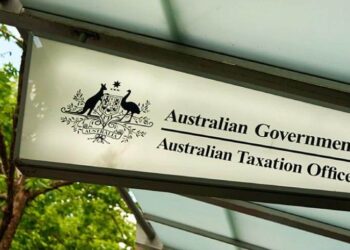The report, Self-managed super fund performance 2020/21, commissioned by the SMSF Association and compiled by the University of Adelaide Centre for Financial Services (ICFS), showed the headline return for the SMSF sector for 2019–20 was -0.6 per cent and 14.8 per cent in 2020–21 compared to -1.2 per cent and 16 per cent over the same period for the APRA fund sector.
The report utilises data from Class Limited, BGL Corporate Solutions and SuperConcepts to delve into more than 310,000 unique SMSFs comprising nearly 546,000 unique performance observations over these two financial years.
It is the second report by ICFS comparing APRA and SMSF sector returns, with the goal being to update the numbers annually.
“The results contribute to the existing body of evidence on the strong financial performance of the SMSF sector,” SMSF Association CEO, Peter Burgess, said.
“We know the actual performance of an SMSF is dependent on the fund’s investment allocation and therefore may bear little resemblance to these headline investment returns.
“However, what this report and the research released last year for the period 2017–19 shows, is that from an overall SMSF sector perspective, there is no systemic underperformance when compared to the APRA fund sector.”
The report also revealed that in years where the APRA fund sector outperforms the SMSF sector, removing funds with balances under $200,000, and which have 80 per cent or more of their assets invested in cash, accounts for much of the performance differentials.
Mr Burgess said the research reinforces the Association’s stance on the importance of professional advice.
“The research couldn’t be clearer – helping SMSF members understand the benefits of asset diversification, and the performance headwinds encountered by small funds (balances under $200,000), will improve the overall performance of the sector,” he said.
The performance tables also provide a return for the SMSF sector with SMSFs with one or more members in the pension phase excluded from the data sample and test the hypothesis that the performance of the SMSF sector, relative to other sectors, is adversely impacted by a larger proportion of SMSF members in the pension phase (and therefore a larger exposure to defensive assets to fund pension payments).
The results showed a marked improvement in the performance of the sector in 2019–20 when investment markets were declining. However, removing pension funds from the data sample in 2020–21, when investment markets were performing strongly, had a very small detrimental impact on the performance of the sector.
“The difference in the performance of the SMSF sector when these funds were removed from the data sample could be traced, in the main, to pension phase funds having a larger allocation to Australian equities,” Mr Burgess said.
“This explains why removing these funds from the sample in a bull market actually has a detrimental impact on the performance of the sector.
“But there is no evidence the performance differential is due to pension phase funds having a higher allocation to defensive assets, as the research found both pension and accumulation phase funds allocated remarkably similar proportions of their overall net assets to cash and term deposits.”
The report also provides further evidence of the risks associated with using the ATO’s published SMSF investment performance data to compare the performance of the SMSF sector to the APRA fund sector.
The ATO’s estimated SMSF investment return for 2019–20 was -1.5 per cent and 12.9 per cent for 2020–21, compared to -0.6 per cent and 14.8 per cent for the same period calculated by the University of Adelaide.
Mr Burgess said the differences relate to the data inputs and the methodology used. The University of Adelaide uses a calculation methodology directly comparable to the data inputs and methodology used by APRA to calculate returns for the APRA fund sector.
“Our results show that overall financial performance of the SMSF sector remains robust, weathering the 2020 COVID-induced market storm relatively better than the APRA fund sector,” University of Adelaide research professor Ralf Zurbruegg said.
“Our analysis also continues to highlight how SMSFs benefit from professional advisory services, especially underscoring the value of trustee education on the benefits of diversified asset allocations and the importance of individuals selecting into SMSFs appropriately based on threshold superannuation balances of more than $200,000.”



Unfortunately, findings in any report about SMSF performance do not reflect the SMSF industry in its entirety because they do not take into account SMSFs that have not had their tax returns lodged, many of which have multiple years outstanding. These are also quite often SMSFs where the trustees have made bad investment decisions and lost a significant amount of money and hence a disengagement from the compliance requirements of maintaining an SMSF. In reality, if these SMSFs were factored into the report findings, SMSF returns will be much lower.